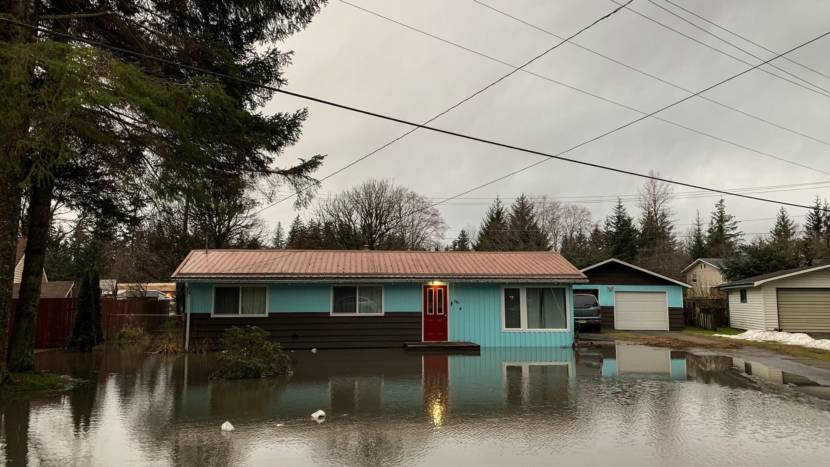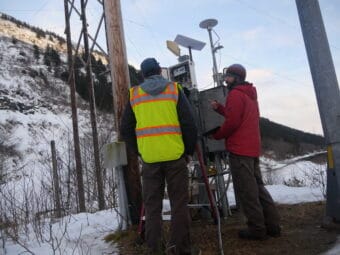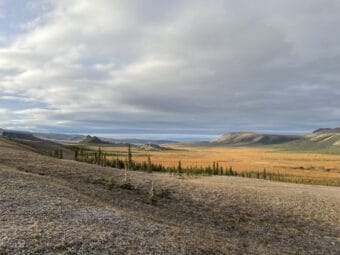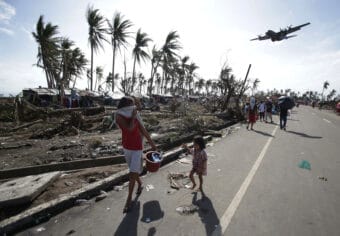
Update | 2:38 p.m. Friday
The governor’s office commented on the possibility of a federal disaster declaration on Friday afternoon.
In an email, Deputy Press Secretary Lauren Giliam wrote, “At this time, Gov. Dunleavy is examining all tools available to assist those impacted by the Southeast floods and landslides. The state is responding to this active event and has adequate response capabilities. Once we enter the recovery phase, a federal disaster declaration may be called upon to support recovery.”
Original story
Most property in Southeast Alaska probably isn’t insured against flood and slide damage from this week’s storm.
Scott Van Hoff is one of the Federal Emergency Management Agency’s flood insurance experts for Alaska. He said FEMA sees storm events like this all over the West Coast.
“They often result in a combination of floods, mudflows and landslides, often all happening in various locations from the same event,” Van Hoff said.
While the soaking rains may be the primary trigger, he said property insurance policies usually distinguish between floods, mudflows and landslides.
Van Hoff said mudflows are usually covered by flood policies. Mudflows can have the consistency of a milkshake and typically leave houses wet and muddy, but intact.
— Jeremiah Blankenship (@neverendingluau) December 3, 2020
If a lot of debris like trees and boulders are moving, that’s probably a landslide, at least according to an insurance adjuster. Or it could even be treated like an earthquake.
“I know a lot of Alaskans are familiar with earthquake policies and have them,” Van Hoff said. “And they read the definitions of that policy, you’ll see that it’s often referred to as an ‘earth movement’ policy. So, oftentimes, those kinds of policies will cover landslides as well as an earthquake. So even a landslide triggered by rain and not triggered by an earthquake might be covered.”
Van Hoff cautioned that these are generalizations. There’s a lot of variation from policy to policy. And that’s if you have earthquake and flood coverage. They’re usually separate additions to regular property insurance.
To get federally insured mortgages in some flood-prone areas, you have to get flood insurance. But Van Hoff said most properties even in these areas don’t have flood insurance.
“You take the total number of structures that exist in flood zones and flood hazard zones in Southeast Alaska, and then look at the number of flood policies we have in those areas — it’s quite low. It’s like, less than 20%.”
The main reason the federal government is involved in flood insurance at all is because the private insurance market rarely offers flood insurance in flood-prone areas.
Van Hoff said those mapped flood zones are “very conservative” estimates of risk.
“(In) reality, flood risk exists just about everywhere,” he said. “And sometimes, you know, it comes at you from an unexpected direction. And these kinds of rain events is where we see those floods occurring in unexpected areas, areas not even in a FEMA-mapped flood zone. … Flood insurance is a pretty good investment, I think, when you live in most places in Southeast Alaska.”
Insurance aside, if the president declares a disaster, that would bring a lot of FEMA resources to bear. It could mean federal grants or loans for repairing public infrastructure, and it could mean direct assistance to small businesses and individuals.
Presidential disaster declarations usually come after a governor requests one. Gov. Mike Dunleavy declared a state disaster in hard-hit Haines on Thursday afternoon. But the governor’s spokesperson Jeff Turner said on Thursday he didn’t know if a presidential disaster declaration was in the works.



